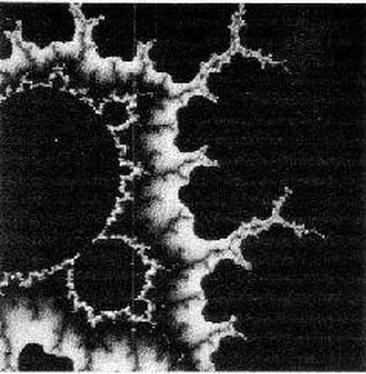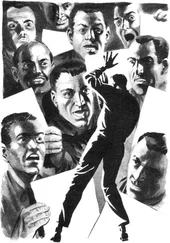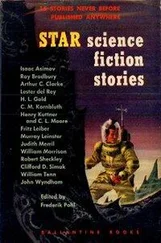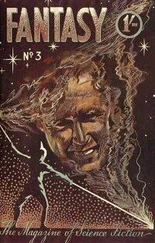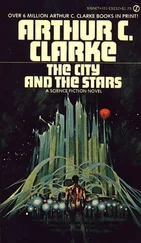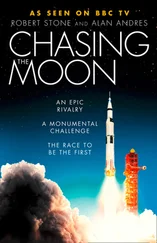Then, abruptly, it seemed that a ghostly dawn was spreading far below. All but the faint red emergency lights in Piccard were switched off, as Titanic ’s prow loomed up ahead.
Almost everyone who saw her now was struck by the same thought: She must have looked much like this, in the Harland and Wolff Shipyard, a hundred years ago. Once again she was surrounded by an elaborate framework of steel scaffolding, while workers swarmed over her. The workers, however, were no longer human.
Visibility was excellent, and the pilot maneuvered Piccard so that the passengers on both sides of the cabin could get the best possible view through the narrow portholes. He was extremely careful to avoid the busy robots, who ignored the submarine completely. It was no part of the universe they had been trained to deal with.
“If you look out on the right,” said the tour guide—a young Woods Hole graduate, making a little money in his vacation—“you’ll see the ‘down’ cable, stretching up to Explorer . And there’s a module on the way right now, with its counterweight. Looks like a two-ton unit—
“And there’s a robot going to meet it—now the module’s unhooked—you see it’s got neutral buoyancy, so it can be moved around easily. The robot will carry it over to its attachment point on the lifting cradle, and hook it on. Then the two-ton counterweight that brought it down will be shuttled over to the ‘up’ cable, and sent back to Explorer to be reused. After that’s been done ten thousand times, they can lift Titanic . This section of her, anyway.”
“Sounds a very roundabout way of doing things,” commented one of the VIPs. “Why can’t they just use compressed air?”
The guide had heard this a dozen times, but had learned to answer all such questions politely. (The pay was good, and so were the fringe benefits.)
“It’s possible, ma’am, but much too expensive. The pressure here is enormous. I imagine you’re all familiar with the standard scuba bottles—they’re usually rated at two hundred atmospheres. Well, if you opened one of these down here, the air wouldn’t come out. The water would rush in —and fill half the bottle!”
Perhaps he’d overdone it; some of the passengers were looking a little worried. So he continued hastily, hoping to divert their thoughts.
“We do use some compressed air for trimming and fine control. And in the final stages of the ascent, it will play a major role.
“Now, the skipper is going to fly us toward the stern, along the promenade deck. Then he’ll do a reverse run, so you’ll all have an equally good view. I won’t do any more talking for a while—”
Very slowly, Piccard moved the length of the great shadowy hulk. Much of it was in darkness, but some open hatches spilled dramatic fans of light where robots were at work in the interior, fixing buoyancy modules wherever lifting forces could be tolerated.
No one spoke a word as the weed-festooned walls of steel glided by. It was still very hard to grasp the scale of the wreck—still, after a hundred years, one of the largest passenger ships ever built. And the most luxurious, if only for reasons of pure economics. Titanic had marked the end of an era; after the war that was coming, no one would ever again be able to afford such opulence. Nor, perhaps, would anyone care to risk it, lest such arrogance once again provoke the envy of the gods.
The mountain of steel faded into the distance; for a while, the nimbus of light surrounding it was still faintly visible. Then there was only the barren seabed drifting below Piccard , appearing and disappearing in the twin ovals of its forward lights.
Though it was barren, it was not featureless; it was pitted and gouged, and crisscrossed with trenches and the scars of deep-sea dredges.
“This is the debris field,” said the guide, breaking his silence at last. “It was covered with pieces of the ship—crockery, furniture, kitchen utensils, you name it. They were all collected while Lloyd’s and the Canadian government were still arguing in the World Court. When the ruling came, it was too late—”
“What’s that ?” one of the passengers suddenly asked. She had caught a glimpse of movement through her little window.
“Where—Let me see—Oh, that’s J.J.”
“Who?”
“Jason Junior. ISA—sorry, International Seabed Authority’s—latest toy. It’s being tested out—it’s an automatic surveying robot. They hope to have a small fleet of them, so that all the seabeds can be mapped down to one-meter resolution. Then we’ll know the ocean as well as we know the Moon…”
Another oasis of light was appearing ahead, and presently resolved itself into a spectacle that was still hard to believe, no matter how many times one had seen it in photos or video displays.
Nothing of the stern portion of the wreck was now visible: it was all buried deep inside the huge, irregular block of ice sitting on the seabed. Protruding out of the ice were dozens of girders, to many of which half-inflated balloons had been attached by cables of varying length.
“It’s a very tricky job,” the young guide said, with obvious admiration. “The big problem is to stop the ice from breaking off and floating up by itself. So there’s a lot of internal structure that you can’t see. As well as a kind of roof up there on top.”
One of the passengers, who obviously hadn’t paid attention to the briefing, asked: “Those balloons—didn’t you say they couldn’t pump air down to this depth?”
“Not enough to lift masses like this. But that’s not air. Those flotation bags contain H 2and O 2—hydrogen and oxygen released by electrolysis. See those cables? They’re bringing down millions—no, billions of amp-hours from the two nuclear subs four kilometers above us. Enough electricity to run a small township.”
He looked at his watch.
“Not so much to see here, I’m afraid. We’ll do one circuit in each direction, then start home.”
Piccard dumped its excess weights—they would be collected later—and was sent back along the “up” elevator cable at Titanic ’s bow. It was time to start autographing the souvenir brochure; and that, to most of the passengers, would be quite a surprise…
D.S.V. “PICCARD”
October 14, 2011
R.M.S. “TITANIC”
April 14, 1912
LUNCHEON
Consommé Fermier Cockie Leekie
Fillets of Brill
Egg à l’Argenteuil
Chicken à la Maryland
Corned Beef, Vegetables, Dumplings
FROM THE GRILL
Grilled Mutton Chops
Mashed, Fried and Baked Jacket Potatoes
Custard Pudding
Apple Meringue Pastry
BUFFET
Salmon Mayonnaise
Potted Shrimps
Norwegian Anchovies
Soused Herrings
Plain Smoked Sardines
Roast Beef
Round of Spiced Beef
Veal Ham Pie
Virginia Cumberland Ham
Bologna Sausage Brawn
Galantine of Chicken
Corned Ox Tongue
Lettuce Beetroot Tomatoes
CHEESE
Cheshire, Stilton, Gorgonzola, Edam
Camembert, Roquefort, St. Ivel, Cheddar
Iced draught Munich Lager Beer 3d. 6d. a Tankard
“I’m afraid quite a few items are off the menu,” said the young guide, in tones of mock apology. “ Piccard “s catering arrangements are rather limited. We don’t even run a microwave—would take too much power. So please ignore the grill; I can assure you that the cold buffet is delicious. We also have some of the cheeses—but only the milder ones. Gorgonzola didn’t seem a very good idea in these confined quarters…
Читать дальше
